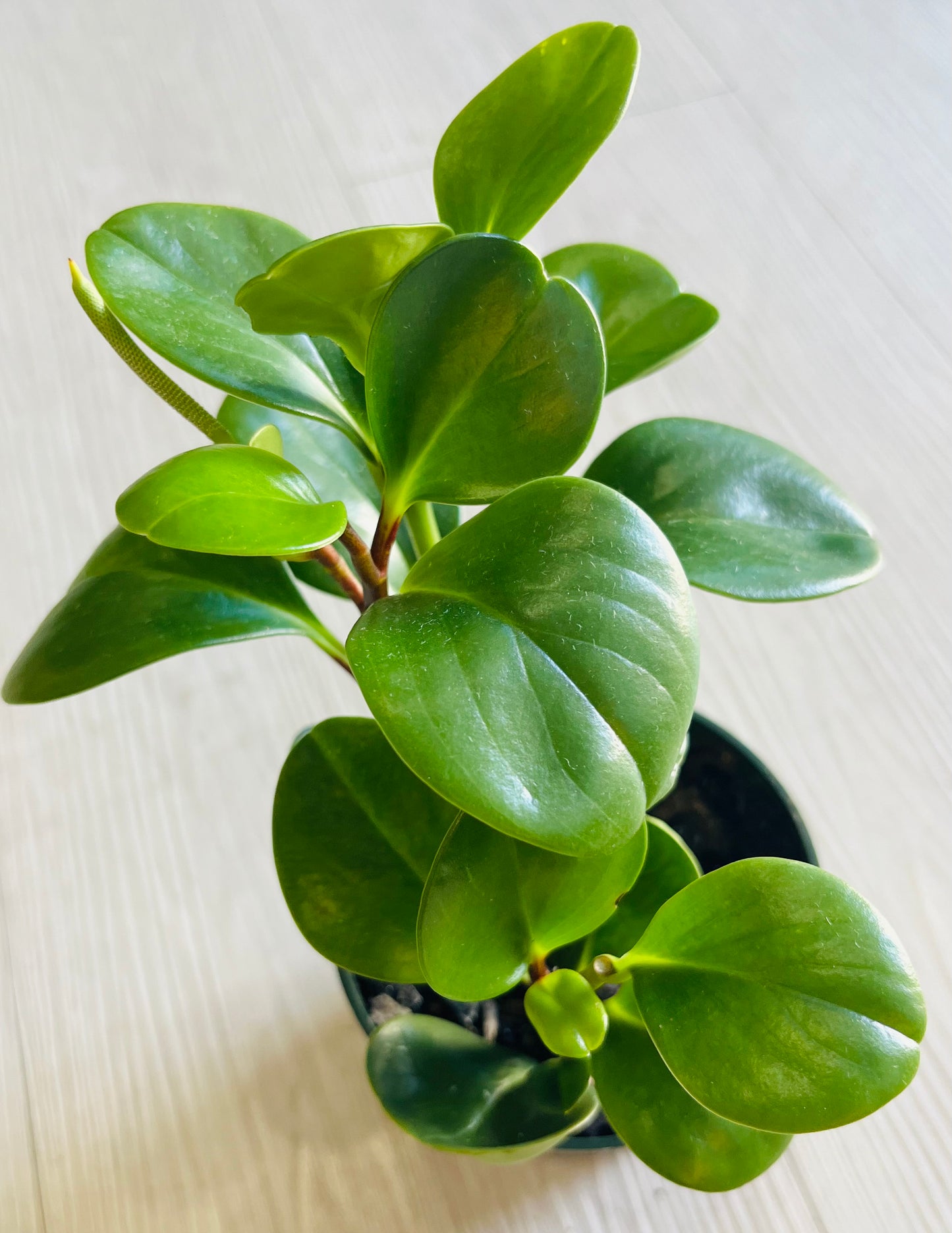SoCal Soul Plants & Gifts
Peperomia
Peperomia
Delivery or In Store Pick Up Available
Delivery or In Store Pick Up Available
Free in-store pick-up is available during store hours.
Orders are ready to go within 24-48 hours after your order is placed.
You will be notified via email when your order is ready for pick up.
Delivery via USPS is available at check out. Not available for plants over 6" nursery pot size.
Share
Couldn't load pickup availability
* The plant photos shown are our stock images used to represent the general appearance, size, and quality of the plant you’ll receive. Please remember that each plant is unique—natural variations in color, shape, and size are completely normal!
Light
-
Prefers bright, indirect light.
-
Can tolerate medium light, but growth may slow and colors may fade.
-
Avoid direct sunlight, which can scorch leaves.
Water
-
Let the top 1–2 inches of soil dry between waterings.
-
Water thoroughly, then drain excess water from the saucer.
-
Overwatering is the most common problem; underwatering is safer.
-
Reduce watering in winter when growth slows.
Humidity
-
Adapts well to average household humidity.
-
Some varieties benefit from slightly higher humidity, but most are tolerant of normal indoor conditions.
Temperature
-
Ideal range: 65–80°F (18–27°C).
-
Keep away from cold drafts and temperatures below 55°F (13°C).
Soil
-
Use a well-draining potting mix, such as a standard houseplant soil with perlite or orchid bark.
-
Avoid heavy, water-retentive soils.
Fertilizer
-
Feed once a month during spring and summer with a diluted balanced liquid fertilizer.
-
Do not fertilize in fall or winter.
Growth
-
Compact, bushy growth habit in most varieties; some trail or climb.
-
Slow to moderate growth; minimal pruning needed.
Propagation
-
Propagate via stem or leaf cuttings, either in water or soil.
Common Issues
-
Yellow or mushy leaves: overwatering.
-
Droopy or wrinkled leaves: underwatering.
-
Leggy growth: insufficient light.
-
Pests: generally low-maintenance, occasional mealybugs or spider mites.
Pet Safety
- Peperomias are non-toxic to pets, making them a great option for homes with cats and dogs.






